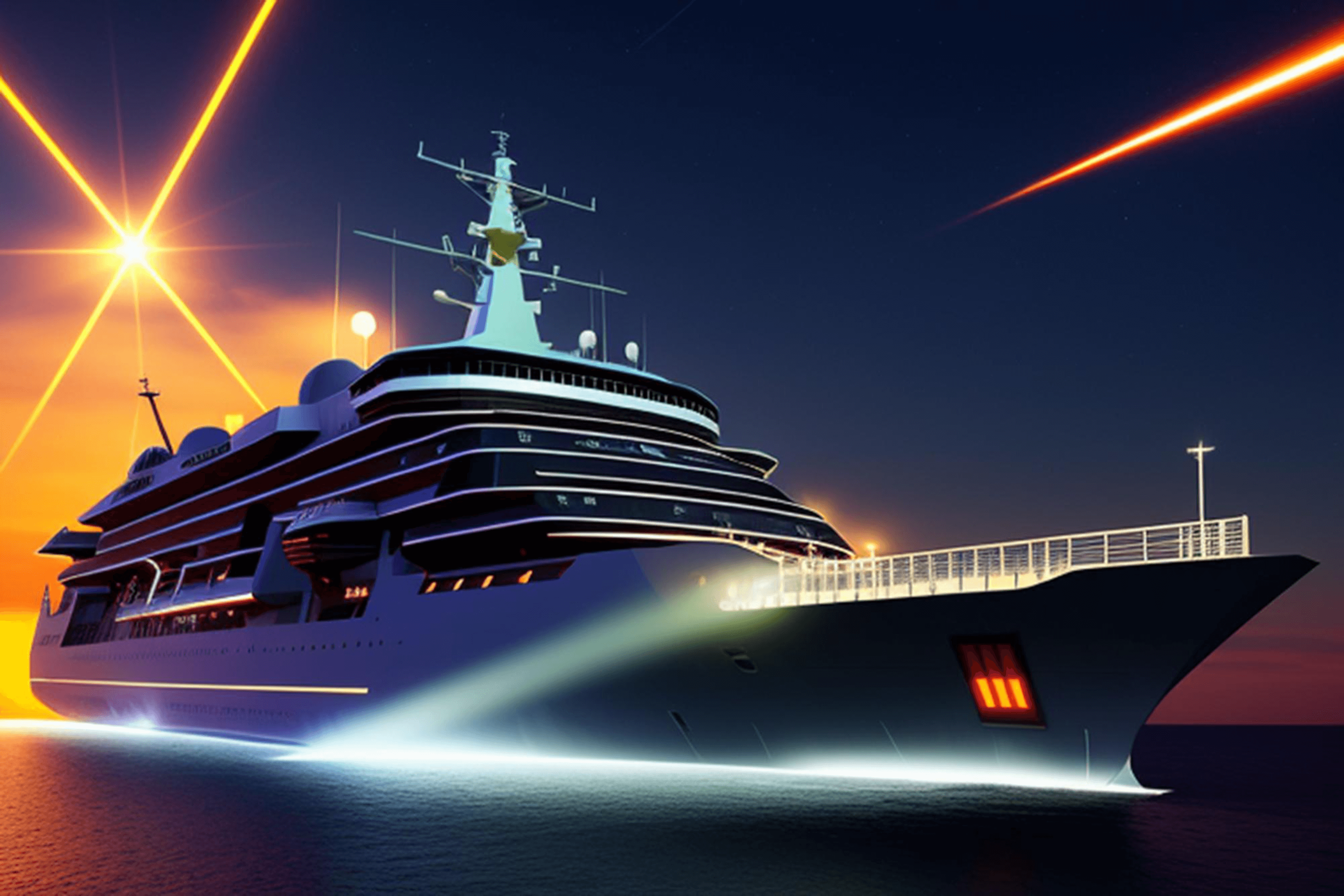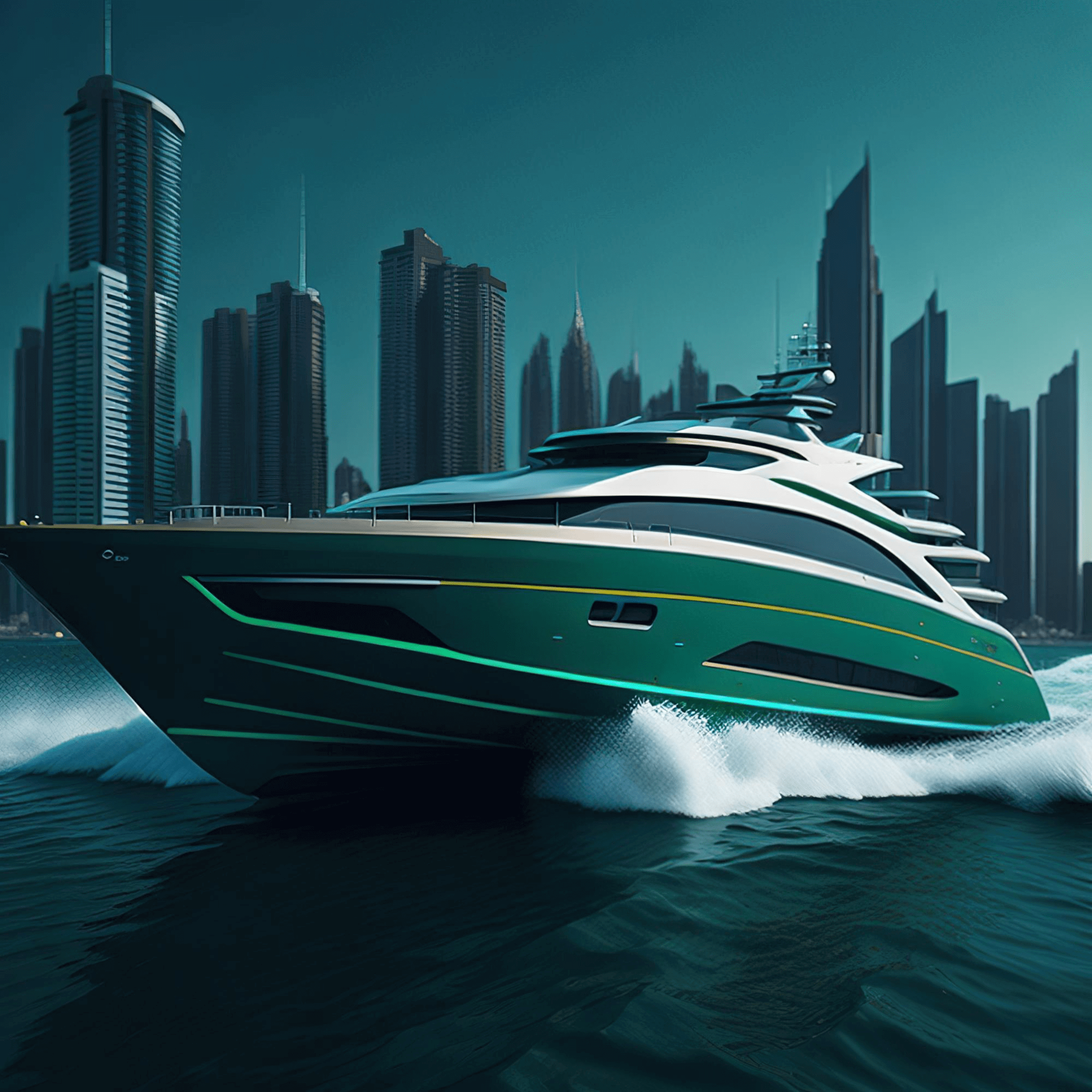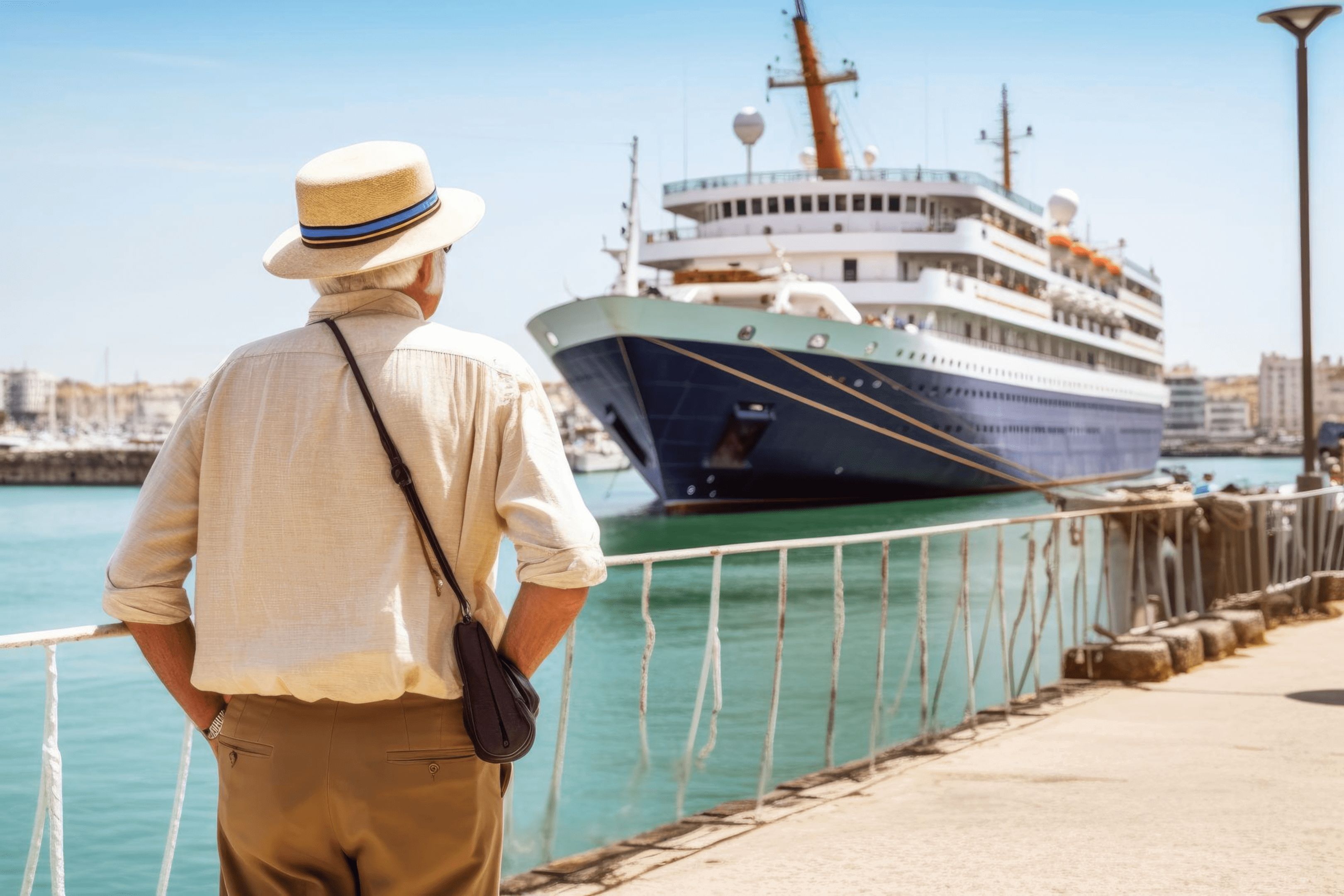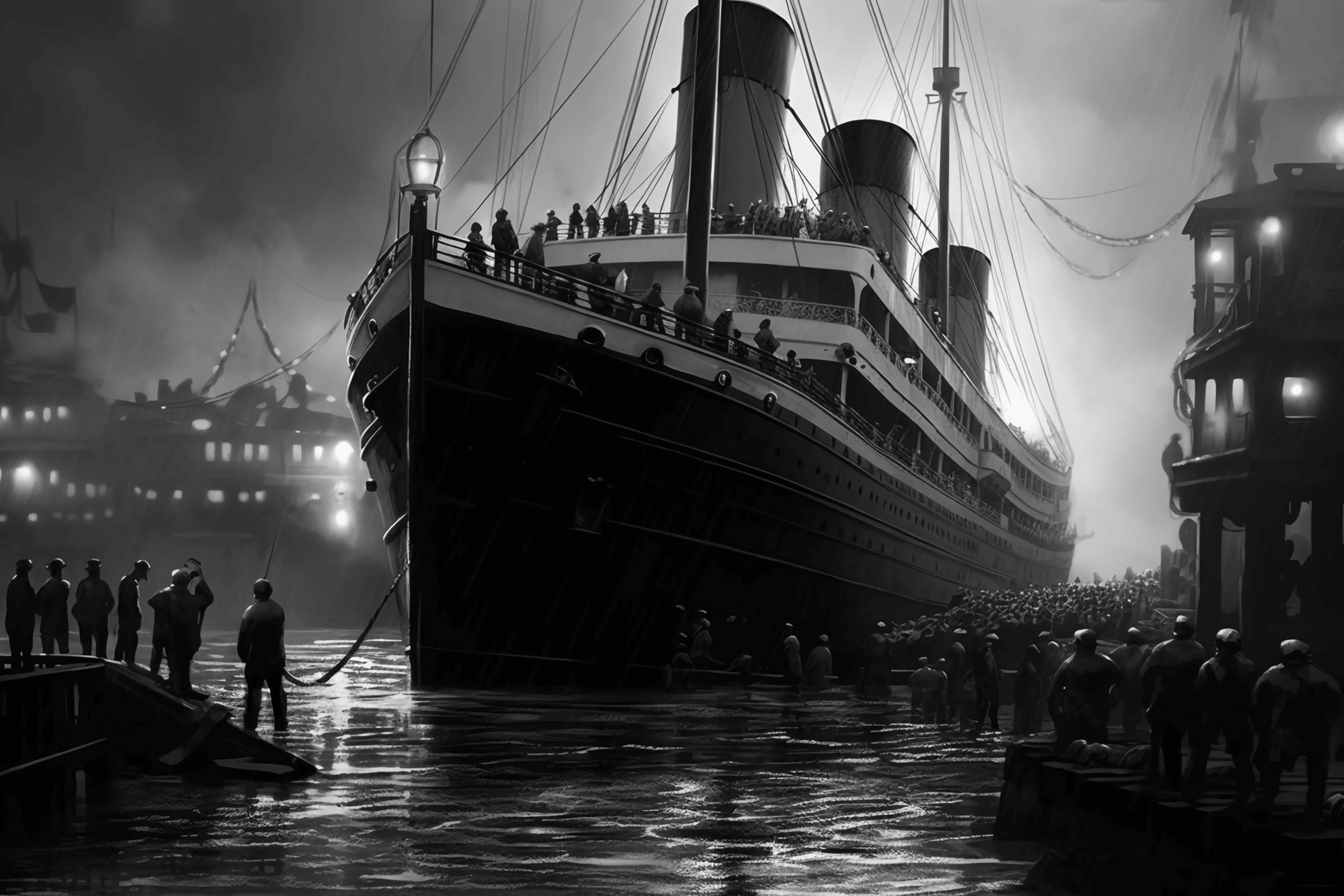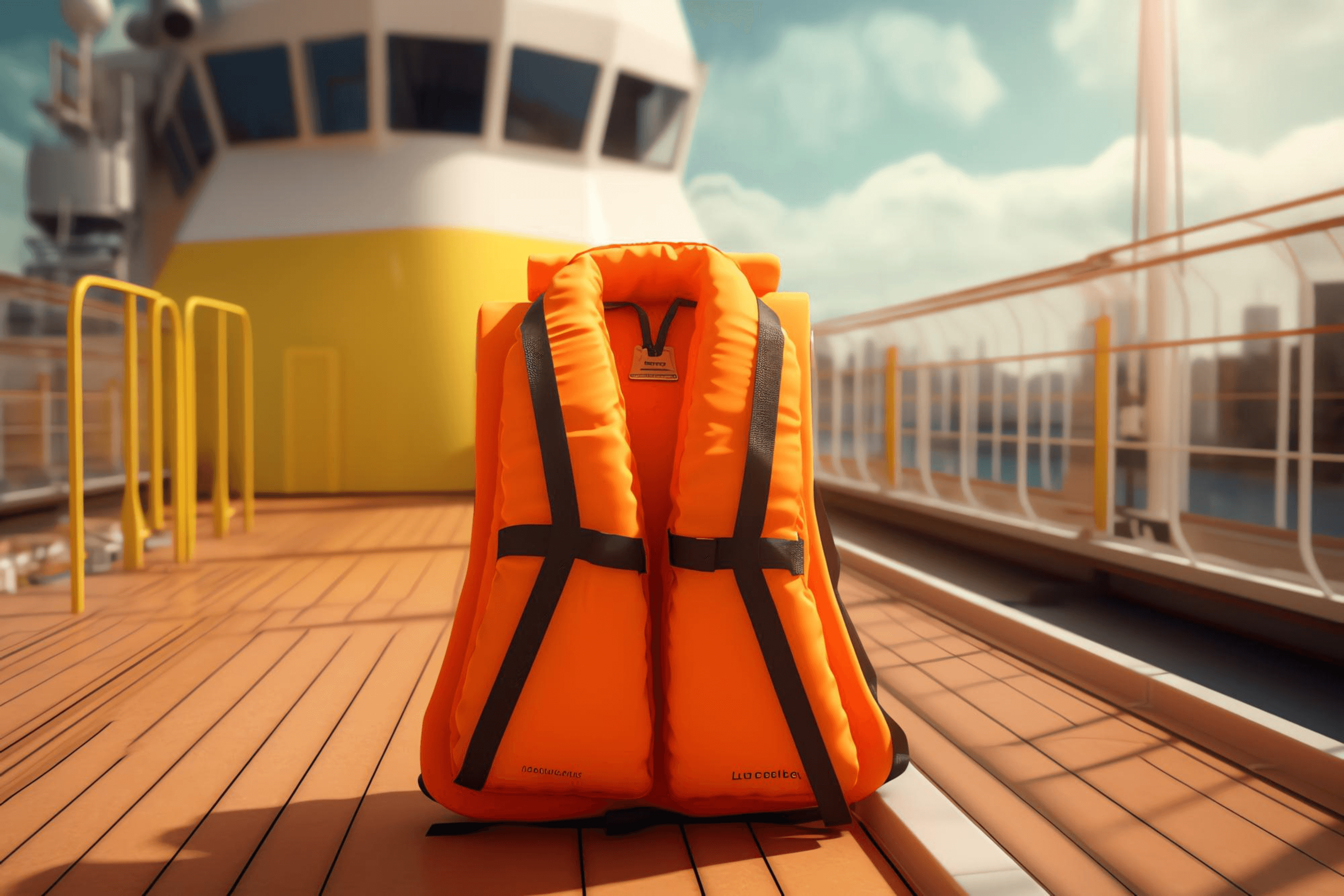When it comes to legendary cruise ships, two names inevitably come to mind: the Wonder of the Seas and the iconic Titanic. Although separated by more than a century, both ships captured the world’s imagination and represent the pinnacle of luxury and engineering of their times. Comparing the Wonder of the Seas and Titanic is like comparing two epochs of maritime history.
In this comprehensive comparison, we’re taking a deep dive into these giants of the sea, exploring how modern cruise ships have evolved over the past century. The Wonder of the Seas vs Titanic, let’s set sail into this epic cruise ship comparison!
Size and Capacity
When it comes to the scale of cruise ships, the giants that stand out are the Wonder of the Seas and the iconic Titanic. Let’s dive deep into the size and capacity of these two maritime marvels and see how they measure up.
Dimensions and Tonnage
The Wonder of the Seas boasts an impressive length of 362 meters (1,188 feet), a width of 66 meters (217 feet), and a height of 72 meters (236 feet) from the waterline. With a gross tonnage of 236,857, this cruise ship is truly a behemoth and currently holds the title of the world’s largest cruise ship.
In contrast, the Titanic, which was the largest ship of its time, had a length of 269 meters (882 feet), a width of 28 meters (92 feet), and a height of 53 meters (175 feet) from the waterline. The Titanic’s gross tonnage was 46,328, which was astonishing for its time but pales in comparison to the massive scale of modern cruise ships like the Wonder of the Seas.
Passenger Capacity
The Wonder of the Seas can house up to 6,988 passengers and 2,300 members of crew. Its 18 decks provide ample space for guest rooms, dining areas, entertainment venues, and recreational facilities.
On the other hand, the Titanic could house up to 2,435 passengers and 892 members of crew. It had three classes of accommodation: first class, second class, and third class, each with its own amenities and dining options. While its capacity was remarkable for its time, it doesn’t come close to the numbers we see in today’s cruise ships.
Deck Count
The Wonder of the Seas features a total of 18 decks, 16 of which are accessible to passengers. These decks include everything from state-of-the-art theaters and restaurants to swimming pools and luxury shopping venues.
The Titanic had 9 decks in total, including the Orlop deck and the Tank Top. It featured grand staircases, lavish dining saloons, and various recreational amenities spread across its decks. While the Titanic was a marvel of its time, the Wonder of the Seas takes luxury and scale to a whole new level.
Amenities and Features
Accommodations
The Wonder of the Seas offers a wide range of accommodations to suit every taste and budget, from spacious interior cabins to luxury suites with personal balconies. With a total of 2,867 staterooms, guests can choose from various categories such as Ocean View, Central Park View, Boardwalk View, and Royal Suite Class. Each stateroom comes equipped with modern amenities like flat-screen TVs, mini-fridges, and private bathrooms.
On the Titanic, accommodations were divided into three classes: First Class, Second Class, and Third Class. First Class cabins featured elegant European-style decor, plush furniture, and private bathrooms. Second Class cabins were more modest but comfortable, while Third Class accommodations consisted mainly of bunk beds in shared rooms. Each class had its own set of amenities, reflecting the social hierarchy of the era.
Dining
On the Wonder of the Seas, guests can indulge in a culinary journey through various dining options, from casual buffets to exquisite specialty restaurants. The ship features a Main Dining Room, Windjammer Marketplace, and a wide array of specialty dining venues such as the Chops Grille Steakhouse, Izumi sushi restaurant, and the Wonderland imaginative cuisine. The ship also offers various à la carte restaurants and cafes to satisfy every palate.
Aboard the Titanic, dining was a grand affair, especially for First Class passengers. The ship featured a luxurious First Class Dining Saloon, where guests could enjoy multi-course meals served by liveried waitstaff. Second Class passengers dined in a separate dining room, while Third Class passengers had their own dining saloon offering hearty, simple meals. The ship also featured a Café Parisien and an à la carte restaurant for First Class passengers.
Entertainment
Entertainment on the Wonder of the Seas is second to none, with a plethora of options to keep guests entertained throughout their voyage. The ship features the Royal Theater, which hosts Broadway-style shows, live music, and comedy performances. Other entertainment options include the AquaTheater, Studio B ice-skating rink, and various live music venues scattered throughout the ship.
On the Titanic, entertainment options were limited to the social class of the passengers. First Class passengers could enjoy the ship’s orchestra, tea dances, and card games in the lavish lounges. Second Class passengers had access to a library and a smaller orchestra, while Third Class passengers often created their own entertainment with impromptu music and dance sessions.
Technology and Innovation
Technological Advancements
When it comes to technological advancements, there’s no denying that modern cruise ships like the Wonder of the Seas benefit from over a century of maritime engineering progress. The ship features state-of-the-art navigation systems, energy-efficient engines, and advanced waste treatment facilities. Technology on board includes high-speed Wi-Fi, interactive touchscreens, and the Royal Caribbean mobile app, which allows guests to plan their activities, make reservations, and even unlock their staterooms using their smartphones.
In contrast, the Titanic was a marvel of its time and represented the pinnacle of early 20th-century engineering. The ship was fitted with the best technology of the period, including a Marconi wireless telegraph system, which was used to send and receive messages (including distress signals). The Titanic also featured advanced safety amenities such as watertight compartments and remotely operated watertight doors. However, the lack of enough lifeboats and the ship’s inability to avoid the iceberg revealed the limitations of the technology of the time.
Innovative Design
The modern cruise ship Wonder of the Seas showcases innovative design elements that enhance the passenger experience. One of the most distinctive features is the “Central Park” neighborhood, an open-air garden with over 20,000 living plants, providing a serene oasis in the middle of the ship.
The ship’s unique split superstructure creates the “AquaTheater,” an amphitheater-style venue with a massive pool that hosts breathtaking acrobatic and diving performances. These design innovations contribute to a more immersive and enjoyable cruise experience.
The Titanic’s innovative design features were focused on luxury and comfort. The ship’s grand staircase, adorned with oak paneling and a wrought-iron balustrade, was a stunning architectural feature that showcased the ship’s opulence. The Titanic also featured an innovative “Café Parisien,” designed to mimic a sidewalk café in Paris, and a first-of-its-kind heated swimming pool. These design elements set the Titanic apart from other ocean liners of the time and contributed to its reputation as the pinnacle of luxury travel.
Cost Wonder of the Seas vs Titanic Cruise Ship
The cost of a voyage on both the Wonder of the Seas and the Titanic varies significantly based on various factors, such as the cabin type, cruise duration, and amenities offered.
For the Wonder of the Seas, sailing itineraries from April to September 2023 start at $840 per person for a 7-night cruise departing from Port Canaveral, Florida, USA. It is important to note that prices may vary due to seasonal fluctuations, available promotions, and other factors.
On the other hand, the Titanic offered a tiered fare structure, reflecting the socioeconomic disparities of the time. A ticket for a First Class Suite, the epitome of luxury, was priced at £870, equivalent to $4,350 at the time.
For a First Class Berth, passengers would have to shell out £30 ($150). Those in Second Class were charged £12 ($60), while a Third Class ticket was more accessible at £7 ($35). These fares, substantial for their time, highlight the wide gulf between the accommodations and amenities enjoyed by passengers of different classes.
Historical Significance and Legacy Wonder of the Seas vs Titanic
Titanic’s Legacy
The Titanic is indelibly etched in history as the “unsinkable ship” that tragically proved otherwise. Operated by the White Star Line, the Titanic epitomized luxury in the ocean liners of its era. The ship’s ill-fated maiden voyage, culminating in its sinking on April 15, 1912, has left an indelible mark on maritime history and popular culture.
The Titanic has become emblematic of the limits of human overconfidence and technological advancement. It starkly showcased the social inequities of the early 20th century, with first-class passengers indulging in luxuries like an à la carte restaurant and a squash court, while third-class passengers made do in tight quarters with bunk beds. The ship’s catastrophic end has been commemorated in numerous books, movies, and documentaries, making it a maritime tragedy that continues to captivate the world.
Wonder of the Seas’ Legacy
The Wonder of the Seas, a recent addition to the Royal Caribbean fleet, is already leaving a mark on the contemporary cruise industry. Holding the distinction of being the world’s largest cruise ship, it offers a wide array of amenities and innovative features tailored to the diverse preferences of today’s cruise-goers.
The Wonder of the Seas exemplifies the strides made in cruise ship technology, delivering enhanced comfort and enjoyment for its passengers. Its groundbreaking design encompasses features that elevate the passenger experience, such as cutting-edge entertainment venues, a broad selection of dining options, and an extensive array of recreational facilities. The ship is setting new benchmarks for the industry, reflecting the remarkable evolution of cruise ships over the past century.
As the Wonder of the Seas continues its voyages, it is poised to leave a lasting impact on the modern cruise industry, influencing the design and offerings of future cruise ships. Its legacy will be defined by its ability to provide a luxurious and unforgettable experience for its passengers, cementing its place in the annals of modern cruise ships.
Safety Features and Regulations
Titanic’s Safety Enhancements
In the early 20th century, the Titanic was regarded as one of the safest ships ever built. It was equipped with several safety elements that were considered advanced for its time, such as a double bottom and 16 watertight compartments designed to prevent flooding.
However, these features were not enough to prevent the Titanic disaster after the ship collided with an iceberg. One of the most notable shortcomings was the lack of lifeboats. The Titanic had only 20 lifeboats, which could house just over half of the ship’s total capacity. The ship’s “unsinkable” reputation may have contributed to the complacency in ensuring adequate lifeboats.
Wonder of the Seas’ Safety Enhancements
In stark contrast to the Titanic, the Wonder of the Seas incorporates state-of-the-art safety features and adheres to stringent modern maritime safety regulations. All modern cruise ships, including the Wonder of the Seas, are equipped with a comprehensive array of life-saving equipment, including enough lifeboats for all passengers and crew.
Additionally, modern ships are designed with advanced fire suppression systems, improved hull and structural design for enhanced stability, and sophisticated navigation and communication tools to assist in avoiding hazards and contacting emergency services if necessary. Regular safety drills are conducted on board to ensure that both crew and passengers know what to do in an emergency.
Evolution of Safety Standards
The Titanic’s sinking significantly influenced maritime safety rules and regulations. The tragedy highlighted the need for comprehensive safety measures, including the provision of enough lifeboats for all passengers and crew.
Consequently, the International Convention for the Safety of Life at Sea (SOLAS) was established in 1914, which set forth a comprehensive set of rules to enhance the safety of passenger ships. Since then, maritime safety standards have evolved significantly. Modern cruise ships like the Wonder of the Seas benefit from over a century of advancements in technology and regulations that have made sea travel safer than ever before.
What If Titanic’s Passengers Could Choose Wonder of the Seas?
Imagine a world where the passengers of the Titanic had the opportunity to travel aboard the Wonder of the Seas, one of the most modern cruise ships of our time. The Royal Caribbean‘s Wonder of the Seas, the largest cruise ship in the world, offers state-of-the-art safety features that could have changed the course of history and prevented the tragedy.
In the early 1900s, a First Class Suite ticket aboard the Titanic cost around £870, equivalent to about $4,350. In today’s money, that would be enough to afford a luxurious experience on the Wonder of the Seas, with prices starting from US $840 per person for a 7-night cruise.
If the Titanic passengers had been aboard the Wonder of the Seas, it’s likely the tragedy could have been avoided. The modern cruise ship is equipped with advanced technology and safety features that the Titanic lacked. The Wonder of the Seas has ample lifeboats, state-of-the-art navigation systems, and rigorous safety protocols that reflect over a century of progress in shipbuilding and maritime regulations.
Furthermore, passengers would have had access to an array of amenities that were unheard of in the early 1900s. From diverse dining options and entertainment venues to expansive recreational facilities and luxurious accommodations, the Wonder of the Seas offers a world of possibilities that would have amazed the Titanic passengers.
In this alternate reality, the Titanic ship could have remained a symbol of luxury and innovation rather than a tragic reminder of the limitations of early 20th-century technology. The Wonder of the Seas represents the pinnacle of modern cruise ships, showcasing how far we have come in terms of safety, technology, and comfort.
By comparing the Titanic with the largest cruise ships of today, like the Wonder of the Seas, we can appreciate the advancements in cruise ship technology and the importance of prioritizing safety and regulations in the maritime industry.
Conclusion
Comparing the Wonder of the Seas and the Titanic reveals the remarkable evolution of cruise ships in terms of size, amenities, and safety standards. The Wonder of the Seas stands as a testament to modern engineering, boasting impressive dimensions, state-of-the-art amenities, and the latest safety elements. Conversely, the Titanic, iconic for its time, had limitations that eventually led to its tragic sinking.
The comparison of these two vessels not only emphasizes the significance of advancements in the maritime industry but also underscores the importance of learning from past mistakes. By examining these ships side by side, we gain a deeper appreciation for how far modern cruise ships have come, and the ongoing need for innovation, safety, and progress in cruise ship design and operations.
FAQs
Is Wonder of the Seas bigger than Titanic?
Yes, the Wonder of the Seas is significantly larger than the Titanic. With a gross tonnage of approximately 236,857, the Wonder of the Seas far surpasses the Titanic’s gross tonnage of around 46,328. In addition to being more massive, the modern cruise ship also offers more advanced amenities and safety features compared to the Titanic, reflecting over a century of progress in shipbuilding and maritime technology.
What is the difference between the Titanic and the Wonder of the Seas?
The main differences between the Titanic and the Wonder of the Seas lie in their size, amenities, and safety features. The Wonder of the Seas is significantly larger, more technologically advanced, and better equipped with safety measures compared to the Titanic. Titanic, though luxurious for its time, simply had fewer amenities and less advanced safety amenities.
Will Titanic 2 ever be built?
No, Titanic 2 will not be built. There were plans for a replica ship, Titanic II, proposed by Australian businessman Clive Palmer, but the project has faced several delays and has yet to materialize. The idea of recreating the Titanic has been met with skepticism and criticism, considering the original ship’s tragic history and the challenges of replicating a ship designed with early 20th-century technology and standards.



